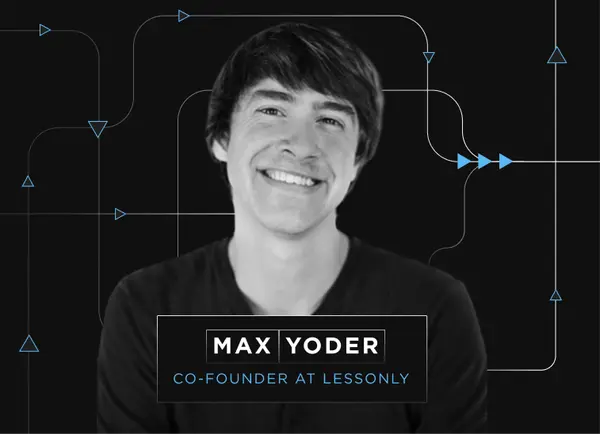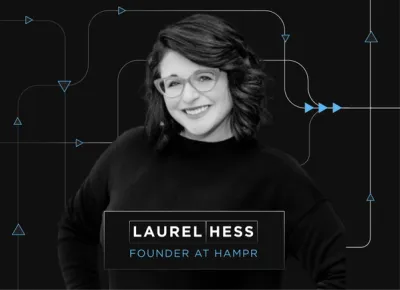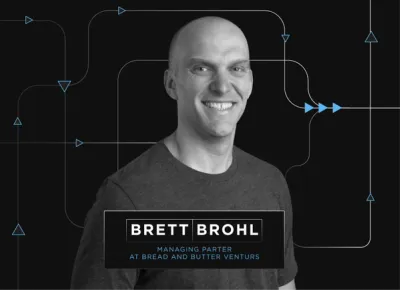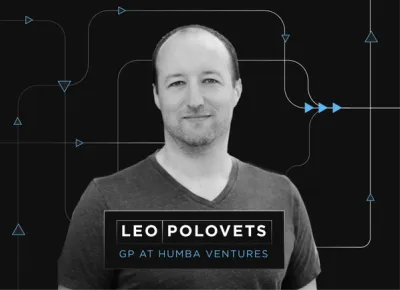
Overstock has long been a bit player in the world of Ecommerce. Founded in Utah in 1999 (at the height of the Dot-Com boom), the company grew rapidly and IPO’d in 2002 (a week after Netflix and almost right at the bottom of the Dot-Com bust) on annual revenue of $40mm and at a market cap of just under $350MM dollars.

Despite being one of the few companies to come out of the Dot-Com crash alive, its long term growth has disappointed and the value of the company today sits just a few million dollars north of where they IPO’d 14 years ago.

Still, the company and its CEO, Patrick Byrne have a way of keeping themselves in the news. There was the battle with naked shortsellers, its rebrand to O.co, and its early adoption of cryptocurrency.
There has also been his ongoing embrace of transparency, which started with the following letter to shareholders recapping the company’s 2003 performance. The general tone and openness of this letter is uncommon for a public company and calls to mind the way Warren Buffett approaches his shareholder communication. So while the performance of the company hasn’t quite kept up with its peers, Byrne’s approach to stakeholder management is as relevant as ever.
All of the charts, images, quotes, and emphasis below were added by us.
If you like what you see and want to share Visible Investor Letters with friends or colleagues, send them here to sign up.
Overstock’s “Super-de-duper” Sales Numbers
The rhythm of the Dao is like the drawing of a bow. – Lao-zi
Dear Owners:
My colleagues executed well this quarter. Were 2003’s four quarters a boxing match, I’d say we were dropped to our knees in the first, cleared our head in the second, got on our toes again in the third, and won the fourth on a decision.
In this letter I will describe how my colleagues accomplished this, and detail some mistakes your chairman made that prevented victory by a knockout.
First, I will explain why I am appending this letter to our earnings release. Simply put, I want owners to understand their business: they entrust capital to me and I owe them no less.
I am warned that a letter such as this has risks. A lawyer told me that my use of this more colloquial style may be misconstrued, saying: everything you write will be Exhibit A in a lawsuit against you, (but lawyers say that about most things). Bill Mann of The Motley Fool says that we live in a time when, if things go passably well, CEOs say, Everything is super-de-duper, and when they go poorly they say, Everything is just super-duper. In such a climate, if I write, X went pretty well, but I could do better on Y and Z, the former is read as an admission of mediocrity, and the latter, calamity.
This fits in with what many founders in the early stage world worry about. Everyone else is “killing it”, why aren’t we? Stakeholders – as Byrne touches on above – deserve to hear from management in an honest and open fashion that lays out what has worked, what hasn’t, and what is coming next.
Lastly, cynics claim that my candor is but an attempt to pump my stock by drawing investors looking for someone who does not pump his stock: I am flattered to have attributed to me such Machiavellian subtlety! (And I suggest they look up Popper’s Falsification Principle.)
Saved you a click…
For six quarters I have struggled to reconcile my desire to report in this fashion to Overstocks owners with the more traditional approach used by most companies. Trying to mold a murky reality into a few lines of happy quotes has always been difficult. I have thus decided (when able and time permitting) to write lengthier and more informative letters to owners, filtering out points that concern individuals, details, or strategies that might bore readers or advantage competitors. Note, then, shareholder, that when I write, X is going pretty well, just because I did not say, X is super-de-duper it does not mean, X is a disaster. Sometimes a cigar is just a cigar. The journalists, lawyers, and cynics will find their own way.
Ed Note – The entirety of the 2003 letter from Overstock is about 10 pages long…we’ve pulled out a few of our favorite passages here. You can read the entire letter here.
Sales
To begin with, sales were super-de-duper. They truly were. We returned almost to the hyper-growth curve (94% year-on-year growth).
Just to give you a sense of the size of the business at the time of this writing, Overstock brought in just under $300mm in revenue during the preceding year and was, as Byrne notes, growing rapidly.
As you would expect, this growth has since slowed significantly due to a number of factors – increased competition and the buyer behavior shift to mobile being a couple. Still, the company has returned to double digit revenue growth in the last three years.
Expense Discipline
I believe I can do much better here. At the risk of giving an excuse I’d note that it is difficult to get expenses precisely right when one starts a quarter with a range of expected GMS from $80 million to $120 million: optionality costs money. Still, in retrospect, I believe I could have saved $1-2 million if I had addressed some issues earlier.
Something that teams at any high growth company can likely relate to.
Capital Needs
Funds call me regularly offering to do PIPE’s (private investment in public equity) at X% discounts with Y% warrant coverage struck up Z%, etc. etc. I am a bear of little brain, and my reaction to such invitations is roughly the same as being asked to join a game of Three Card Monte in Times Square. Yet their enquiries do keep me thinking about the issue of capital.
Build a model of our business at break-even and growing 100%. Do we need capital? If we were a brick factory the answer would be, “yes”, but for the float reason given above the answer is, hard as it may be to imagine, maybe not. Yet my answer would continue, That is, if we are comfortable skimming along at times with a weeks worth of cash in the bank, as we did at one point this Q4 when we bulked up for Christmas.
Are we at break-even? Not yet: our GAAP loss in Q4 2003 was 2.6% of revenue. Should we strive to be at break-even? What if, by continuing to lose two-and-a-half pennies on every dollar of sales, we could grow at our current rate for three more years (and thus turn into a >$2 billion GAAP revenue business): should we? What if we could lose four pennies but grow at 200%: should we? It depends, I suppose, on what our net margin would be when we throttled back growth.
In sum, then: it is not clear that Overstock needs more capital; if we do, it is not clear we need it now; if we do need it now we are not going to raise it through a warrant-warted PIPE. That said, we will continue to look at our capital needs and try to position ourselves so that we will be able to raise capital conveniently if the right time arrives. For example, we are in the process of obtaining an inventory line of credit. Please know that I have the benefit of an excellent board, well-versed in capital and which views advising me on this issue as one of its main duties.
In the early stage market, it is common to see founders plan or go through fundraising processes at a certain pace and targeting a certain amount of money just because they think it is what they are supposed to do or because it is available.
While there is almost never anything wrong with opportunistically raising capital to increase optionality, the decision to raise capital of any type should always be well thought out else you risk wasting your time chasing opportunities that are not a good fit.
Operations
We had a few sleepless nights here. At this point I suppose I should mention that, as Team Overstock’s player/coach, it is my occasional and regrettable duty to reposition, bench, trade, and sometimes cut teammates, alas. “Benching” takes the form of sending people home on paid leave to recoup and to allow us to rearrange. For example, two summers ago I benched someone by sending him and his family to Hawaii while I took his job myself: when he returned I gave him a different job (in fact, things like this happen often enough that “getting sent to Hawaii” is synonymous around here with “getting a last chance.”)
This Christmas season an executive moved to the bench: I did not put out a press release about it, partially out of respect for him, but also because his future role in the game was unclear. As I have noted recently, he is no longer with the company. While I acknowledge that losing one’s COO during the Christmas rush is discomforting (as I know better than anyone), I hope that this clarifies my thinking satisfactorily.
Rare insight into how the CEO of a public company thinks about what is likely the most important responsibility he has, attracting and retaining good people. Image below via First Round’s “State of Startups”.
Conclusion
A man crosses a desert by shooting an arrow from his bow and retrieving it as he walks. He must cross the desert with the fewest shots possible. At times he strains the bow with all his strength and lets his arrow fly, but sacrifices accuracy, at times shooting the arrow wildly off course. Other times he aims carefully and draws timidly, attempting little but guaranteeing himself small, solid progress. In time he finds the balance of draw and aim that covers the most ground in the fewest shots.
I have not yet found such balance. Yet in 2003 Q4 we drew the bow deeply, and our shot went far and fairly straight. On such a deep draw I could have blundered the shot (as I have before), and only the excellent work of my colleagues prevented mishap. I do not enjoy chancing so much on each shot. Yet I saw an opportunity to let one fly, and we still have much ground to cover.
Your humble servant,
Patrick M. Byrne
President
P.S. As much as I like hearing from owners and potential owners, I am now deluged by the volume of contacts from those saying they want to invest but must get to know me better before they do. I am flattered; I am humbled (believe me, you’d be disappointed if we met); I am torn between wanting to help answer their questions and Reg FD; but mostly, I am out of time. Though I enjoy hearing and learning from owners I must, regrettably, propose two alternatives. First, in the investor relations section of our site I intend to include material that will elucidate our business philosophy. Second, for any who actually visit us in Utah I will always make time to meet with you.
Sounds like Patrick needs a “one-to-many” tool to manage the communication with his investors a bit more efficiently…we know where he can find one 😉




